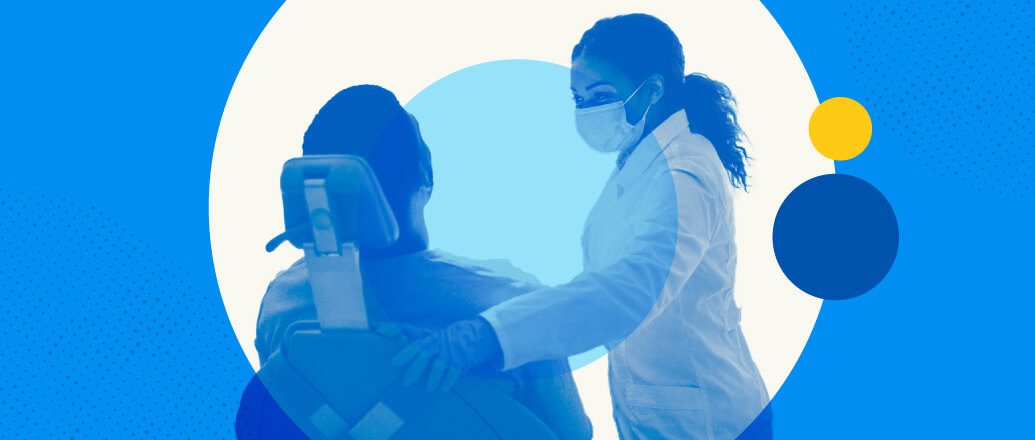Effective dental patient communication is important for dental practices to be successful. Avoid these six barriers to prevent ill effects on patient satisfaction.
Good dental patient communication establishes the groundwork for building good doctor-patient relationships. Without it, dental healthcare outcomes, as well as patient engagement and retention, will suffer.
It’s vitally important for dental practitioners to do their utmost to develop a good connection with patients, addressing their anxieties as well as meeting expectations. When communication breaks down or is just plain ineffective, it can limit the success of diagnosis, treatment, management, and overall quality of care provided.
Barriers to effective dental patient communication are not always easy to recognize. Dentists and patients might also have conflicting ideas about the cause and relevance of a perceived obstacle, as well as how to overcome it. In order to mitigate and hopefully resolve these miscommunications, it’s vital to get to their root cause and adopt effective strategies for managing them.
Here we’ve detailed the most common barriers to effective dental patient communication hindering dental practices from thriving.
1. Time Management Constraints
Time pressures at a dental practice can sometimes lead to poor patient communication. What if a patient arrives late, and hasn’t yet filled out the necessary forms? Or perhaps there’s an unexpected delay with a procedure, which has a knock-on effect and puts your schedule out of kilter?
Effective communication in healthcare isn’t something that can be rushed. When you have to juggle competing demands, the quality of communication may be neglected. An efficient scheduling tool can help processes run more smoothly. However, even when time is of the essence, remember that a simple smile and a few pleasantries can make all the difference in ensuring your patient feels seen and valued.
2. Difficulties in Rapport-Building
As healthcare becomes more patient-centric and personalized, a good rapport between the dental practitioner and the patient is more important than ever in realizing shared health goals. Trust is a vital factor in cementing this relationship, and it’s achieved by trying to understand your patients and treating them like a partner in their dental health journeys.
Studies in the US have shown that successful dental patient communication depends on the nature of the rapport established just as much as the dentist’s clinical knowledge and technical skills. The seven skills identified as being essential for good interpersonal communications include: establishing confidence, compassion, empathy, personal interest, honesty and transparency, respect, and a conscientious attitude. These factors lead to greater patient satisfaction and understanding, resulting in better observance of treatment plans and improved end results.
3. Patient Lacks Understanding of the Treatment Plan
Low health literacy has been identified as one of the major problems in the healthcare system.
Effective communication in healthcare is central to ensuring that people adhere to a treatment plan. When this doesn’t happen, there’s always the possibility that they just don’t understand what the treatment plan entails. Information overload may be the underlying cause. It’s harder for someone to listen to and absorb new and detailed information when they’re feeling stressed, anxious, or in pain.
Try not to overwhelm a patient with too much new information, statistics, and options. It’s usually preferable to stick to the main points while emphasizing anything essential to the treatment plan. You could also suggest they take notes, ask a friend or relative to be present, and supply supplementary written material after the consultation.
Enhancing access to information and education is vital to helping patients understand their treatment and make informed decisions. Using a patient relationship management system can improve communication by delivering information directly to the patient at the right time and through the right channel, which adds up to better patient relationships and superior dental healthcare outcomes.
4. Poor Explanation of the Patient’s Condition
Jargon can muddy the waters of doctor-patient interactions at the best of times. In fact, using too much technical and clinical terminology is one of the leading barriers to effective patient communication.
When explaining a patient’s condition, keep vocabulary as plain as possible, don’t speak too quickly or use complex sentences, and choose an age and audience-appropriate language, as well as simple sentence structures. In addition, bear in mind that some words can have different meanings depending on their context and that others may sound the same, but mean different things! Miscommunication can also occur due to variations in pitch and tone.
5. Language and Culture Differences Affecting Dental Patient Communication Quality
Misunderstandings between patients and practitioners might also be based on differences in language and culture. Geographic and cultural diversity accounts for a wide variety of beliefs, values, customs, and habits, leading to biases and preconceptions which can create significant patient communication barriers.
While a patient’s background and culture might lead them to misread or misinterpret a situation or interaction, also guard against your own prejudices and consider how these could impact conversations and possibly cause offense. Differences in greetings and gestures, attitude to time, preferences in eating and dressing, and the formality – or informality – of communication, are dynamics which you need to bear in mind.
6. Physical Set-Up of the Dental Clinic Hinders Quality of Dental Patient Communication
The dental practice environment may be an added hindrance to effective patient communication, particularly if it is busy, loud, or distracting in some way. Factors such as the room size, poor lighting, limited privacy, and excessive noise, whether from traffic or people’s voices, may all play a part in helping – or hindering – communication.
Obstacles to communication stemming from the physical set-up might also include problems with communications systems, such as slow Internet and computer systems and bad mobile connections. The physical distance itself could be challenging if it does not allow easy face-to-face interactions.
A calm and relaxed environment is best for ensuring good communication. If need be, consider opening blinds to let more light in or closing doors to keep noise levels down.
Build Better Dental Patient Communication and Relationships with RevenueWell
There are multiple barriers to effective communication, some less obvious than others. Perhaps you’ve chosen the wrong setting to deliver detailed and complex information, made an incorrect assumption about the patient’s grasp of a proposed procedure, rushed them into a treatment plan, or left them out of the decision-making process.
While it’s crucial to brush up on interpersonal communication skills to boost patient retention and engagement, it’s equally important to make sure that all channels of communication are performing optimally.
RevenueWell offers an all-in-one patient dental communication management system and marketing platform to facilitate the practice-patient information flow. Keep patients engaged by communicating the way they want to communicate and improve patient loyalty by adding more personal touches.
Book a demo with RevenueWell today and say hello to more engaged patients and productive days.







